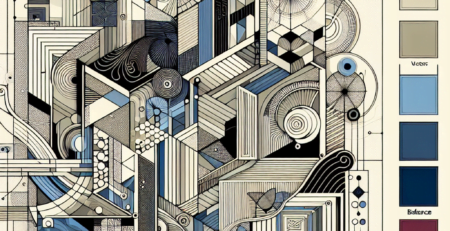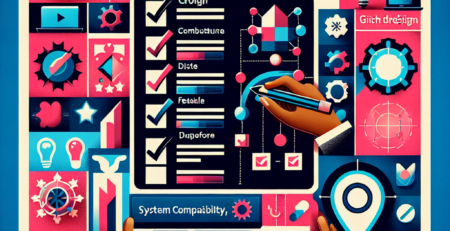Aplicaciones innovadoras para el corte CNC 2D
Tabla de contenido
“Shaping the Future with Precision: Innovative Applications for 2D CNC Cutting.”
Introducción
Innovative Applications for 2D CNC Cutting refers to the advanced and creative uses of two-dimensional Computer Numerical Control (CNC) cutting technology in various industries. This technology, which involves the use of computers to control and guide cutting tools, has revolutionized manufacturing processes, enabling precise and efficient production of complex designs. The innovative applications range from creating intricate architectural models, custom furniture, and signage to producing parts for aerospace, automotive, and electronics industries. These applications highlight the versatility and precision of 2D CNC cutting technology, making it an indispensable tool in modern manufacturing and design.
Exploring the Future: Innovative Applications of 2D CNC Cutting in Manufacturing
The advent of 2D CNC (Computer Numerical Control) cutting technology has revolutionized the manufacturing industry, offering unprecedented precision, efficiency, and versatility. This technology, which uses computer-controlled machines to cut materials into desired shapes and sizes, has found applications in a wide range of industries, from automotive to aerospace, from electronics to fashion. As we explore the future, it is clear that the innovative applications of 2D CNC cutting in manufacturing are only set to increase, driven by advancements in technology and the ever-evolving needs of the industry.
One of the most exciting developments in the field of 2D CNC cutting is its integration with advanced software and artificial intelligence. This combination allows for the creation of complex, intricate designs that would be impossible to achieve manually. For instance, in the automotive industry, CNC cutting is used to create precision parts with intricate designs, contributing to the production of more efficient, lightweight, and aerodynamic vehicles. Similarly, in the aerospace industry, CNC cutting is used to manufacture components with high precision and consistency, which is crucial for the safety and performance of aircraft.
Another innovative application of 2D CNC cutting is in the realm of sustainable manufacturing. With the growing emphasis on sustainability and environmental responsibility, manufacturers are increasingly seeking ways to reduce waste and optimize resource use. CNC cutting technology, with its high precision and efficiency, can significantly contribute to these efforts. By minimizing material waste and reducing the need for manual labor, CNC cutting can help manufacturers achieve their sustainability goals while also improving their bottom line.
The versatility of 2D CNC cutting also opens up possibilities for its use in new and emerging industries. For example, in the burgeoning field of additive manufacturing or 3D printing, CNC cutting can be used to create molds and templates, enabling the production of complex, custom-made parts. In the fashion industry, CNC cutting is being used to cut fabrics with high precision, enabling the creation of intricate designs and patterns, and paving the way for a new era of fashion design and manufacturing.
Moreover, the future of 2D CNC cutting in manufacturing also lies in its potential for customization and personalization. With the rise of the ‘maker movement’ and the growing demand for personalized products, manufacturers are increasingly turning to CNC cutting technology. This technology allows for the production of custom-made parts and products, catering to the unique needs and preferences of individual customers. This trend is particularly evident in industries such as furniture manufacturing, where CNC cutting is used to create custom-designed pieces with a high level of precision and detail.
In conclusion, the future of 2D CNC cutting in manufacturing is bright, with numerous innovative applications on the horizon. From its integration with advanced software and artificial intelligence to its role in sustainable manufacturing, from its versatility in new and emerging industries to its potential for customization and personalization, CNC cutting technology is set to continue transforming the manufacturing landscape. As we move forward, it will be exciting to see how this technology evolves and what new applications it will find in the ever-changing world of manufacturing.
Revolutionizing Design: The Role of 2D CNC Cutting in Modern Architecture

Innovative applications for 2D CNC cutting are revolutionizing the field of modern architecture, offering unprecedented precision and versatility in design. Computer Numerical Control (CNC) technology, which uses computer software to control machine tools, has been a game-changer in various industries. In architecture, the advent of 2D CNC cutting has opened up a world of possibilities, enabling architects to push the boundaries of design and create structures that were once considered impossible.
The role of 2D CNC cutting in modern architecture is multifaceted. At its core, it offers a level of precision that is unmatched by traditional cutting methods. This precision is crucial in the creation of intricate designs and complex structures, allowing architects to execute their visions with a high degree of accuracy. Moreover, the technology is highly adaptable, capable of cutting a wide range of materials, including wood, metal, and plastic. This versatility broadens the scope of what architects can achieve in their designs.
One of the most significant benefits of 2D CNC cutting is its ability to streamline the design process. Traditional methods of cutting and shaping materials can be time-consuming and labor-intensive. With CNC technology, these tasks can be automated, saving time and reducing the potential for human error. This efficiency is particularly beneficial in large-scale projects, where even minor mistakes can have significant consequences.
Furthermore, 2D CNC cutting allows for greater consistency in the production of architectural elements. Once a design has been programmed into the CNC machine, it can be reproduced exactly, time and time again. This consistency is vital in architecture, where uniformity of components can be a critical factor in the structural integrity of a building.
In addition to these practical benefits, 2D CNC cutting is also transforming the aesthetic possibilities of architecture. The technology allows for the creation of intricate patterns and shapes that would be difficult, if not impossible, to achieve by hand. This has led to a new wave of architectural design, characterized by bold, geometric forms and intricate detailing. From the undulating facades of modern skyscrapers to the intricate lattice work of contemporary pavilions, the influence of 2D CNC cutting is evident.
The potential of 2D CNC cutting in architecture extends beyond the creation of physical structures. The technology is also being used in the design and production of architectural models. These models, which are crucial in the planning and visualization of architectural projects, can now be produced with a level of detail and accuracy that was previously unattainable.
In conclusion, the role of 2D CNC cutting in modern architecture cannot be overstated. The technology is revolutionizing the field, offering unprecedented precision, versatility, and efficiency in design. As architects continue to explore the potential of this technology, we can expect to see even more innovative applications in the future. From the creation of intricate designs to the production of architectural models, 2D CNC cutting is shaping the future of architecture.
Transforming Industries: The Impact of 2D CNC Cutting in Automotive Production
In the realm of manufacturing, the advent of 2D CNC (Computer Numerical Control) cutting technology has revolutionized the way industries operate, particularly in the automotive sector. This innovative application of technology has not only streamlined production processes but also significantly enhanced the quality and precision of the final products.
The automotive industry, known for its complex production processes and high demand for precision, has greatly benefited from the implementation of 2D CNC cutting technology. The technology’s ability to accurately cut a variety of materials, including metal, plastic, and composite materials, has made it an indispensable tool in automotive production.
One of the most significant impacts of 2D CNC cutting in automotive production is its contribution to increased efficiency. Traditional cutting methods often require manual intervention, which can be time-consuming and prone to errors. However, with CNC cutting, the process is automated, reducing the likelihood of human error and significantly speeding up production times. This increased efficiency not only reduces production costs but also allows for higher production volumes, a critical factor in an industry where demand often outstrips supply.
In addition to increased efficiency, 2D CNC cutting also offers unparalleled precision. The technology uses computer-aided design (CAD) and computer-aided manufacturing (CAM) software to guide the cutting process, ensuring that each cut is accurate to the minutest detail. This level of precision is particularly crucial in automotive production, where even the smallest deviation can have significant implications on the performance and safety of the final product.
Moreover, the versatility of 2D CNC cutting technology has opened up new possibilities in automotive design. With traditional cutting methods, complex shapes and designs can be challenging and costly to produce. However, CNC cutting can easily handle intricate designs, allowing automotive manufacturers to push the boundaries of innovation and create vehicles that are not only functional but also aesthetically pleasing.
The environmental impact of manufacturing processes is a growing concern in today’s world, and here too, 2D CNC cutting technology has made a positive impact. The precision of CNC cutting reduces waste by ensuring that materials are used as efficiently as possible. Furthermore, the automation of the cutting process reduces the need for energy-intensive manual labor, contributing to a lower carbon footprint.
The integration of 2D CNC cutting technology into automotive production has also had a significant impact on the workforce. While there has been some concern about job displacement due to automation, the reality is that CNC technology has created new, highly skilled roles within the industry. These roles require a deep understanding of CAD and CAM software, as well as the ability to oversee and troubleshoot the CNC cutting process. As such, the rise of CNC technology has led to a demand for a new kind of workforce, one that is technologically savvy and capable of working with advanced machinery.
In conclusion, the impact of 2D CNC cutting technology on the automotive industry has been transformative. By increasing efficiency, enhancing precision, enabling innovative designs, reducing environmental impact, and creating new job opportunities, this technology has reshaped the landscape of automotive production. As the industry continues to evolve, it is clear that 2D CNC cutting technology will continue to play a pivotal role in its future.
Conclusión
In conclusion, innovative applications for 2D CNC cutting have revolutionized various industries by offering high precision, efficiency, and versatility in creating complex designs and patterns. These applications have significantly reduced manual labor, increased production speed, and minimized waste, leading to cost-effectiveness and sustainability. They have also opened up new possibilities for customization and creativity in manufacturing processes.





Deja una respuesta